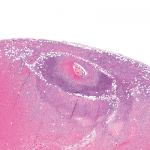The field of rheumatology is witnessing a remarkable revolution as the prospects for patients with rheumatoid arthritis (RA) continue to improve dramatically. This change results from two main factors: 1) the more effective utilization of older disease modifying antirheumatic drugs (DMARDs) such as methotrexate alone or in combination with recently available targeted therapies; and 2) a landmark shift in therapeutic strategy. Several trials have clearly shown that early achievement of low disease activity through DMARD use has a strong positive outcome on the disease course. By its nature, this approach necessitates the assessment of disease activity by objective, well-validated measures as well as frequent adjustment of therapy to push toward remission.
Rheumatologists now know the importance of treating early disease; however, the criteria for RA are undergoing changes. The purpose of these revised criteria is increased sensitivity and specificity to diagnose RA in an early phase of disease.
Why Defining RA Is Difficult
Why is it difficult to define early RA? Ask the average rheumatologist to define RA, and he or she will provide answers like “symmetric polyarthritis of small joints combined with morning stiffness, presence of rheumatoid factor (RF), or anticitrullinated peptide antibodies (ACPA), or combined with bone erosions on X-rays.” It is clear that these views mirror the 1987 ACR criteria for RA and demonstrate the extent to which our thinking on RA is inextricably connected with these criteria. It is obvious that these criteria do not perform well when diagnosing early RA. This is especially true for patients who have limited joint involvement, negative serologies, or negative radiographs.
The 1987 criteria, developed based on patients with an average disease duration of eight years, contain elements that are associated with disease severity (e.g., erosions and nodules) rather than disease development (see Table 1, p. 23). A moderate diagnostic performance of these criteria in early RA is frequently reported. In these studies, the doctor’s opinion is often used as the gold standard. Summarizing the literature, the sensitivity and specificity of the 1987 criteria for early RA are 77%–80% and 33%–77%, respectively, compared with 79%–80% and 90%–93%, respectively, for established RA.1 These differences in performance characteristics are inherent in the objective for which the 1987 ACR criteria were designed. The aim at the time of their creation was to provide correct classification, distinguishing the syndrome of established RA from other established joint diseases, to ensure that clinical researchers studied homogeneous patient groups. Considering the test characteristics that have been reported in many publications, this aim was achieved.
